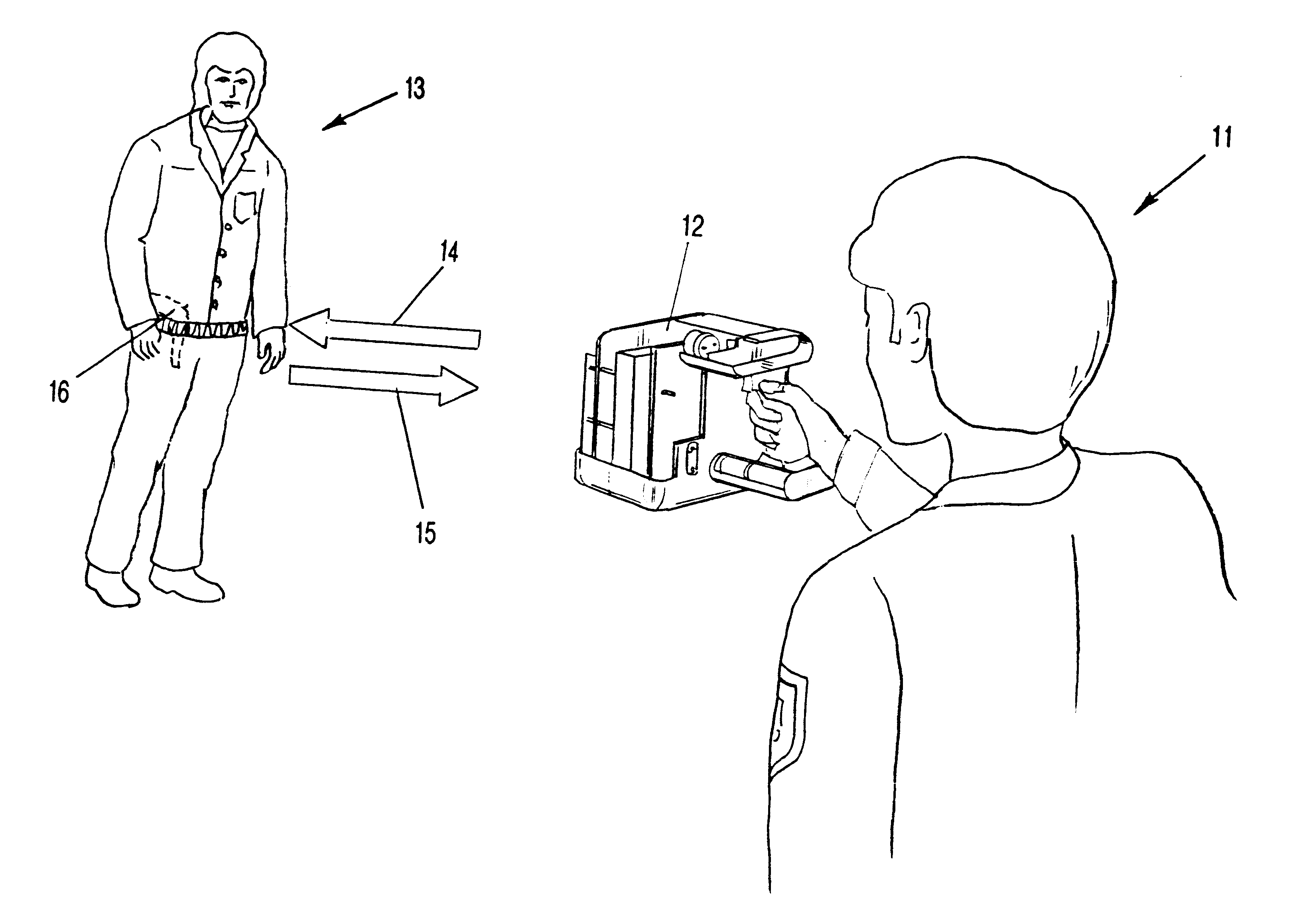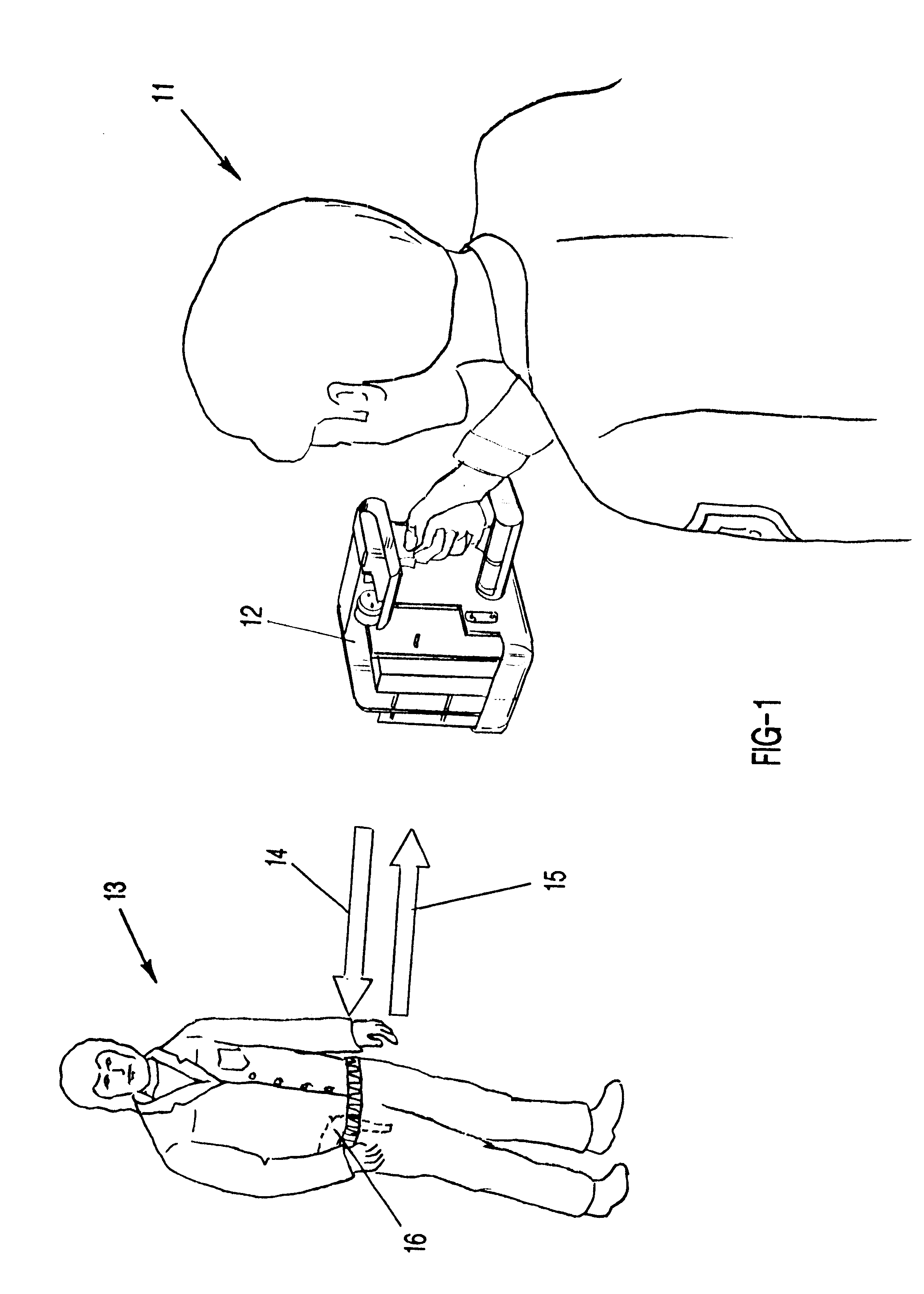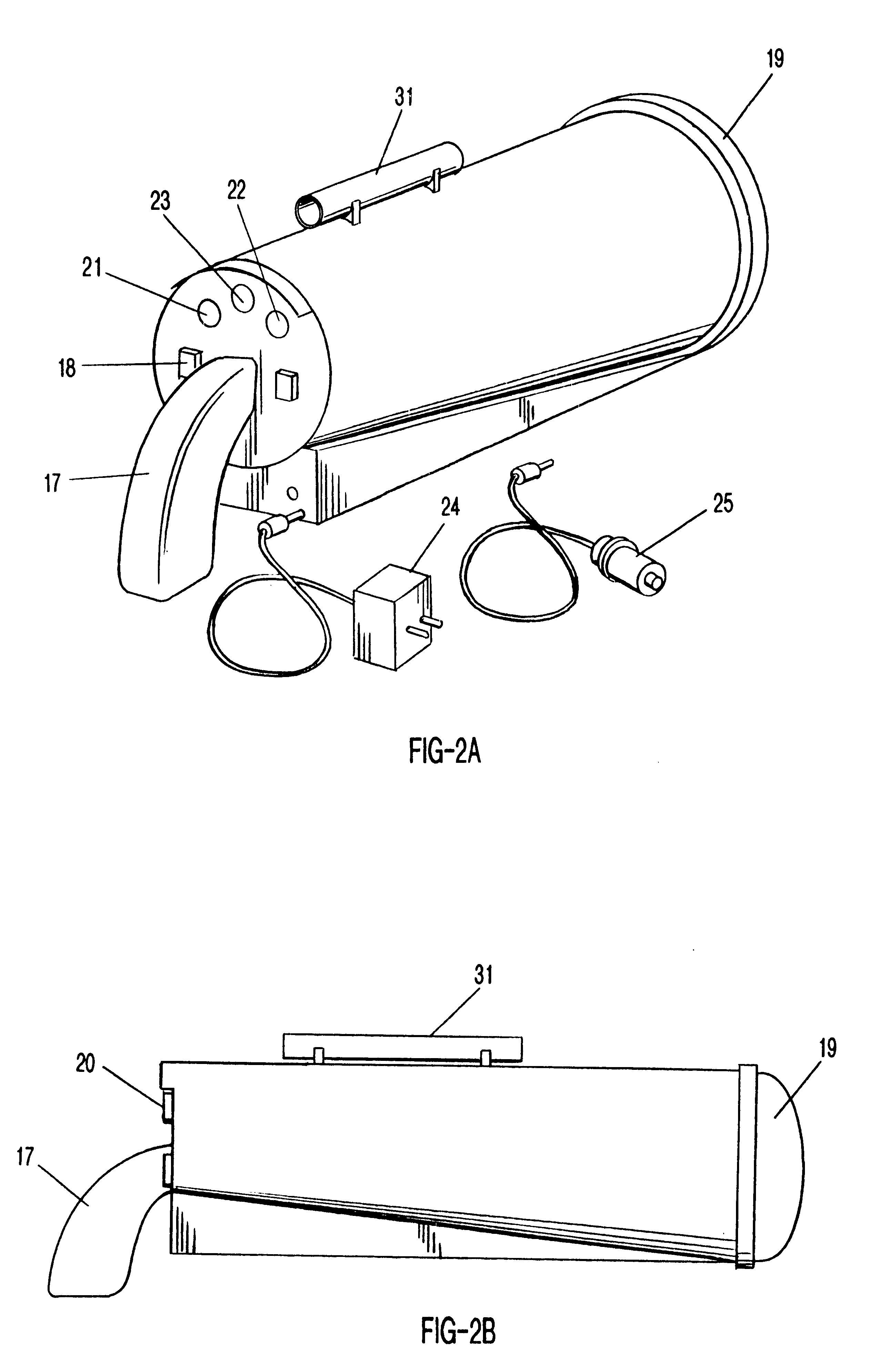Concealed weapons detection system
a concealed weapon and detection system technology, applied in the field of concealed weapon detection systems, can solve the problems of no known concealed weapon detection system, type of system cannot discriminate between concealed weapons and other metallic objects such as belt buckles, coins, watches, etc., and utilizes millimeter-wave efforts, etc., to achieve the effect of successfully detecting non-metallic objects
- Summary
- Abstract
- Description
- Claims
- Application Information
AI Technical Summary
Benefits of technology
Problems solved by technology
Method used
Image
Examples
Embodiment Construction
)
The weapons detection system of the present invention uses a short-pulse radar approach that is stepped over a series of frequencies. The system preferably comprises a trigger, pulser, broad band antenna, amplifier and signal processor. The radar first enters the range finder-mode to determine the distance to the target being surveyed. The range information is used to set the gain of the amplifier so that the output is normalized to range. This normalization permits the waveform returned from the target to be analyzed independent of range. The use of the range gate eliminates background clutter or scatter from overriding the return from the target. The system uses a low voltage pulser to produce a series of microwave pulses transmitted on a compact, broad band antenna. The reflected waveform is returned from the target through the same antenna. The received signal is range-gated and converted to an IF signal. The signal is amplified in the IF amplifier and is then envelop-detected....
PUM
 Login to View More
Login to View More Abstract
Description
Claims
Application Information
 Login to View More
Login to View More - R&D
- Intellectual Property
- Life Sciences
- Materials
- Tech Scout
- Unparalleled Data Quality
- Higher Quality Content
- 60% Fewer Hallucinations
Browse by: Latest US Patents, China's latest patents, Technical Efficacy Thesaurus, Application Domain, Technology Topic, Popular Technical Reports.
© 2025 PatSnap. All rights reserved.Legal|Privacy policy|Modern Slavery Act Transparency Statement|Sitemap|About US| Contact US: help@patsnap.com



